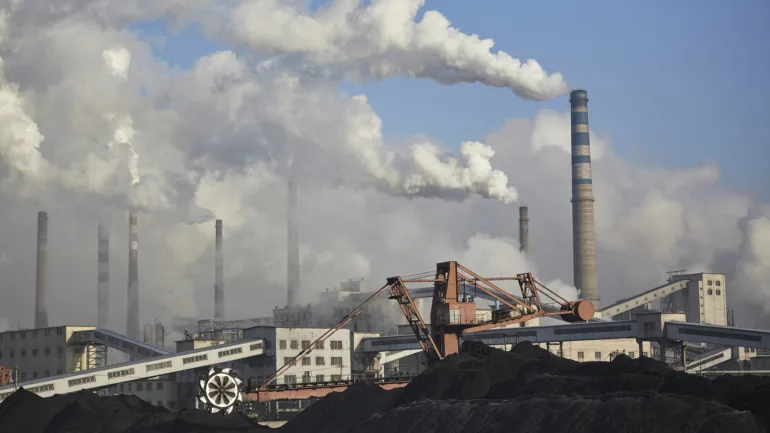The UK has reduced its carbon emissions by 50.4% compared to 1990 levels, according to the Climate Change Committee (CCC), the official body advising the government on climate policy.
The figures were released on Wednesday in the CCC’s first assessment of the new Labour government’s progress on emissions reduction since it came to power last July. The report evaluates emissions from sectors including power generation, industry, road transport, residential buildings, aviation, and agriculture.
However, it does not include emissions tied to the UK’s consumption of imported goods. A separate government report in May revealed that emissions associated with imports rose by 80% between 1996 and 2022, especially from countries like China, reflecting the UK’s shift from manufacturing to a service-based economy.
The CCC attributed much of the UK’s emissions reduction to the near-total shutdown of coal-fired power plants and the rapid growth of renewable energy.
“The UK can be proud of our progress in reducing emissions—we’ve cut them by more than 50% since 1990,” said interim CCC chair Piers Forster. “This success has been driven largely by decarbonising the electricity sector, as renewables increasingly replace coal and gas.”
Aviation now a bigger polluter than power
Despite the overall decline, the CCC warned that rising aviation emissions are becoming a concern. The sector now contributes a larger share of the UK’s total emissions than electricity generation.
“Continued emissions growth from aviation could jeopardize future climate targets,” the report warned.
Forster urged the government to show the public clear benefits of transitioning away from fossil fuels—particularly through lower electricity bills—and stressed the need for energy independence.
“Given the current state of global geopolitics, moving from volatile fossil fuel markets to homegrown renewable energy is not just an environmental imperative but a strategic one,” he said.
Looking ahead, the CCC said over 80% of the emissions reductions needed by 2030 must come from sectors beyond electricity—especially transport, heating, and land use.
There have been some positive signs like electric vehicles now account for 19.6% of new car sales, with 1.5 million electric cars on UK roads—double the number from two years ago.
Heat pumps installations rose by 56% in 2024, but uptake remains low, covering only about 1% of homes—among the lowest rates in Europe.
And tree planting afforestation increased by 59% in 2023–24, the highest rate in 20 years.
In 2024, the UK’s territorial emissions (excluding those from the pandemic years) fell by 2.5%, marking the 10th straight year of decline.
Labour commended for early policy shifts
While much of the recent progress is attributed to the policies of the previous Conservative government, the CCC praised the Labour administration for “bold decisions” made since taking office.
These includes removing planning barriers for renewable energy projects, reaffirming the 2030 phase-out date for new petrol and diesel cars and providing clarity on the government’s clean power mission
However, the easing of planning restrictions has sparked criticism from environmental groups, who warn that poorly sited renewable projects—especially on sensitive peatlands—could increase methane emissions.
Labour leader and Prime Minister Keir Starmer has committed to cutting greenhouse gas emissions by 81% by 2035, relative to 1990 levels. The ambitious new target was announced last November at the opening of the COP29 climate summit in Baku, Azerbaijan.
The Climate Change Committee is mandated to assess the UK’s adaptation and mitigation progress every two years.
AFP


